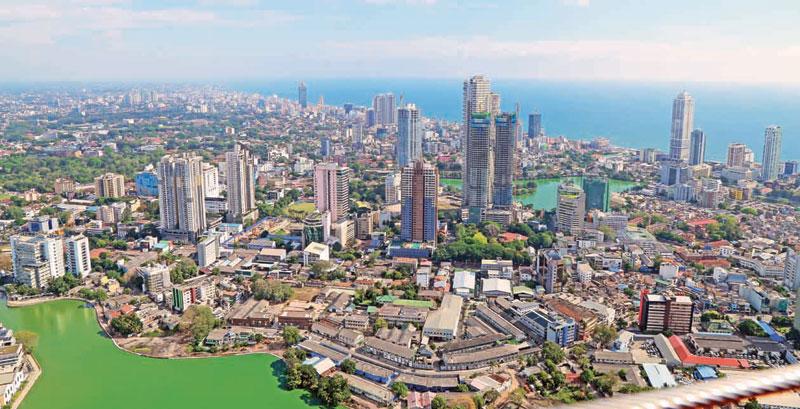
Inclusion of public art as a major component in city development master plans is crucial to boost economic development and tourism, Internationally-renowned artist, architect and engineer Cecil Balmond said.
Public art has become a part of urban regeneration and a great method for adding value to city development plans.
Sri Lankan born British architect Balmond said public art concepts could add immense value to current city projects in Sri Lanka. “It can make public places more attractive and approachable. Most city projects around the world have incorporated art projects through which they attract tourists to the city.
Public art provides tangible and intangible benefits. In some cases, it can become an integral part of the community; it enriches peoples’ thinking besides giving a sense of pride for people and creating history and connects communities.
 By promoting cities with public art, countries can benefit economically. It stimulates creative economy, he said at a recent forum in Colombo.
By promoting cities with public art, countries can benefit economically. It stimulates creative economy, he said at a recent forum in Colombo.
He said, Colombo can be rich and fertile if the authorities take a serious interest in rebuilding the city with a comprehensive plan.
“There have been impressive plans for Colombo since the 1940s. However they never saw light at the end of the tunnel.” A city plan has to be comprehensive and a piece of art finally.
Balmond who spoke at a forum themed ‘Big Architecture and Cities’ organised by the Council for Business with Britain, emphasised the advantages of building big cities full of landmarks, gathering places, monuments, museums, theatres and activities for every visitors.
He said Colombo Fort is an area that can be transformed in to a vibrant space with visitors; thereby creating a thriving economy. He is worried that Fort area has been neglected by city planners. “As a young man I used to admire those buildings a lot. They are brilliant pieces of colonial architecture.”
If given a chance Balmod would like to join a Fort rebuilding project.
Referring to the current Port City project, he said, “It is a huge challenge. Politics can disturb the development activities. If the Port City project goes well, it could be a massive development for Sri Lanka.”
Balmond is the architect of Cinnamon Life Colombo who pioneered the design for the project.
“Without infrastructure, city plans do not work,” he says. Talking about the way forward for Colombo’s future as a big city, he said, there should be more conferences and fora to discuss ideas on planning and the political agendas should not be a reason to cripple city development projects.
As Balmond explained, water, energy, transportation and communication infrastructure are integral parts of city planning.
The United Nations General Assembly has designated October 31 as World Cities Day, to explore issues around global urbanisation, encourage cooperation among countries and to contribute to sustainable urban development. This year’s theme was “Changing the world: innovations and better life for future generations”. UNESCO has advocated for more people-centred urban development models, including in the area of urbanisation with a view to‘re-humanise’ cities.
City infrastructure
Talking about city planning and infrastructure, Kim Jensen, Group Senior Vice President and Regional Managing Director, Grundfos Asia Pacific Region, said that it is more important now than ever for countries’ to consider the impact of urbanisation and the ways in which we should go about addressing the challenges arising from this global phenomena.
Jensen said, “Our cities are swelling at an astonishing pace. By 2030, urban areas are projected to house 60 per cent of people globally, and one in every three people will live in cities with at least half a million inhabitants. This hits close to home as most of the world’s fastest growing cities are in Asia. “We are seeing this fast-paced growth take a toll on our environment and its resources. Greater demand for energy and water has caused our limited resources to dwindle at an alarming rate. It is therefore imperative for cities to be smarter in their approaches to energy, water supply and wastewater management, empowering communities and industries to be self-sufficient in a way that consumes the least resources.”
Jensen added that with this year’s World Cities Day theme as “Changing the world: innovations and better life for future generations”, this highlights the fact that we need to tap into innovation and digital transformation in order to ensure resilient, liveable cities for decades to come.
“For many, this vision is based on creating “smart cities”, which means harnessing digital technology, Big Data and intelligent products and networks to help cities distribute resources efficiently and solve large-scale environmental challenges,” he said.
“For example, pumps are responsible for a staggering 10 per cent of global electricity consumption. This means the pump industry is an obvious target for reducing energy consumption through higher efficiency motors and built-in intelligence.
“Whether we achieve the Sustainable Development Goals depends largely on how we manage our cities. For this to happen, cities will have to continue to drive innovation in ground-breaking ways,” said Jensen.
